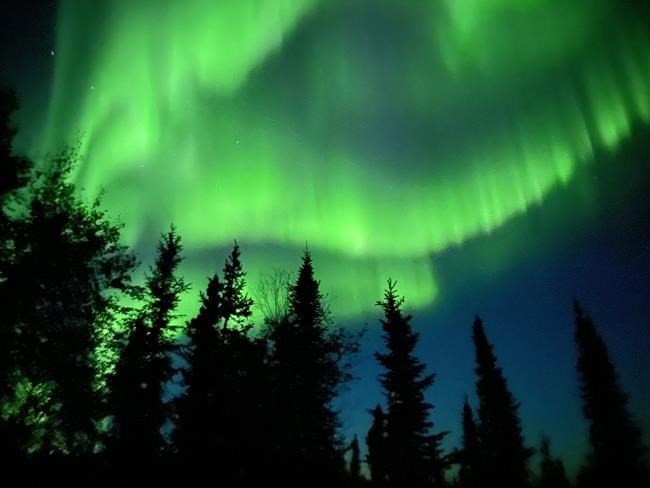YELLOWKNIFE — As aurora season begins in the Northwest Territories, some tourists have been heading north to view the dazzling displays of lights as the tourism industry slowly begins to recover from the COVID-19 pandemic.Â
Bobby Drygeese owns and operates B. Dene Adventures, which offers aurora viewing and cultural tours that teach about Yellowknives Dene First Nation traditions in Dettah, N.W.T. He says they have had some guests from elsewhere in Canada this year, but not as many as before the pandemic.
"It has been really slow, but it has been picking up and a lot of people are interested in what we're doing," he said.Â
While thankful for government support during the pandemic, Drygeese said relief is still needed as tourism businesses begin to welcome back visitors.Â
"A lot of companies are really struggling with paying their bills," he said.Â
The Discovery Inn in Yellowknife highlights aurora as one of the local attractions.Â
Manager Edward Tse said before the pandemic, roughly 70 per cent of hotel guests came from Japan, Korea, Taiwan, and China. Now that out-of-territory travellers are returning to the N.W.T., he said about 50 to 60 per cent of bookings are visitors from elsewhere in Canada and the United States.Â
"Right now it's still at the beginning stage of recovery," he said.Â
The N.W.T. boasts some of the best and brightest aurora in the world, attracting thousands of domestic and international visitors during aurora season each year, which stretches from roughly mid-August to April.Â
Before the pandemic, tourism spending in the N.W.T. totalled nearly $295 million in 2019-2020, with 117,620 people visiting the territory, largely from elsewhere in Canada. Almost a third of those travellers came to see the aurora, spending nearly $60 million.Â
COVID-19 public health restrictions introduced in late March 2020 had a profound impact on tourism in the territory. Leisure travel was prohibited until March 2022, while remote tourism operators like fly-in lodges were allowed to apply to host guests from outside the territory beginning in April 2021. All public health measures in the N.W.T. were lifted in April 2022.Â
Of tourism operators who responded to an N.W.T. government survey in March 2020, 94 per cent said they had fewer bookings and 73 per cent said their revenues had decreased compared to 2019, while 36 per cent said they either laid off or terminated staff. In total, they said, 325 employees were affected.Â
In another survey conducted by non-profit Northwest Territories Tourism in September 2020, of the 94 tourism operators and those in the tourism-support sector that responded, 88 per cent said revenues in the first seven months of 2020 had dropped compared to 2019, with 75 per cent saying they had decreased by more than half. A total of 443 full-time and 405 part-time jobs were reported to have been lost.Â
Ed Romanowski, president of Nunastar Properties Inc. which owns The Explorer Hotel in Yellowknife, said the leisure travel market "isn't what keeps the lights on" for airlines and large hotels.
"These are the markets that take a lot longer to organize … and to build confidence in longer distance travel," he said, adding it generally takes two to three years for international markets to come back.
Romanowski said other types of travel to the territory have recovered more quickly such as business and government travel, airline crews staying overnight, inter-territorial travel, and people visiting friends and family.Â
"We've had a very, very busy summer and early fall. There was a lot of pent-up demand," he said, adding it hasn't yet recovered to pre-pandemic levels.Â
Across Canada, the number of international travellers entering the country along with tourism spending has continued to increase as border restrictions have eased, but they have yet to reach pre-pandemic levels.Â
Statistics Canada reported that in the second quarter of 2022, tourism spending grew 19.8 per cent nationally but was still 21.7 per cent lower than spending in the fourth quarter of 2019.Â
The federal government lifted all restrictions for anyone entering Canada as of Oct. 1.Â
This report by The Canadian Press was first published Oct. 15, 2022.Â
This story was produced with the financial assistance of the Meta and Canadian Press News Fellowship.
Emily Blake, The Canadian Press



